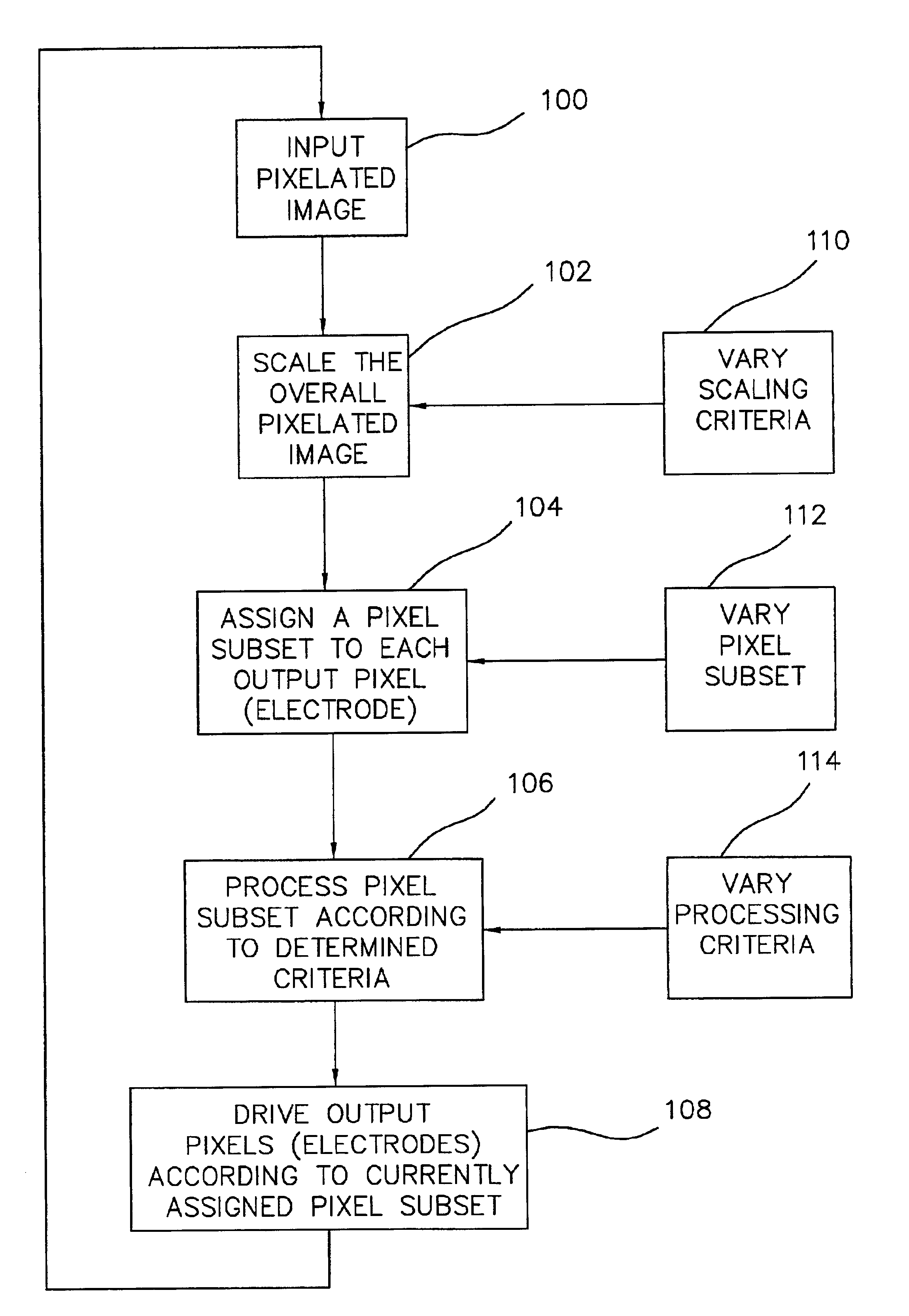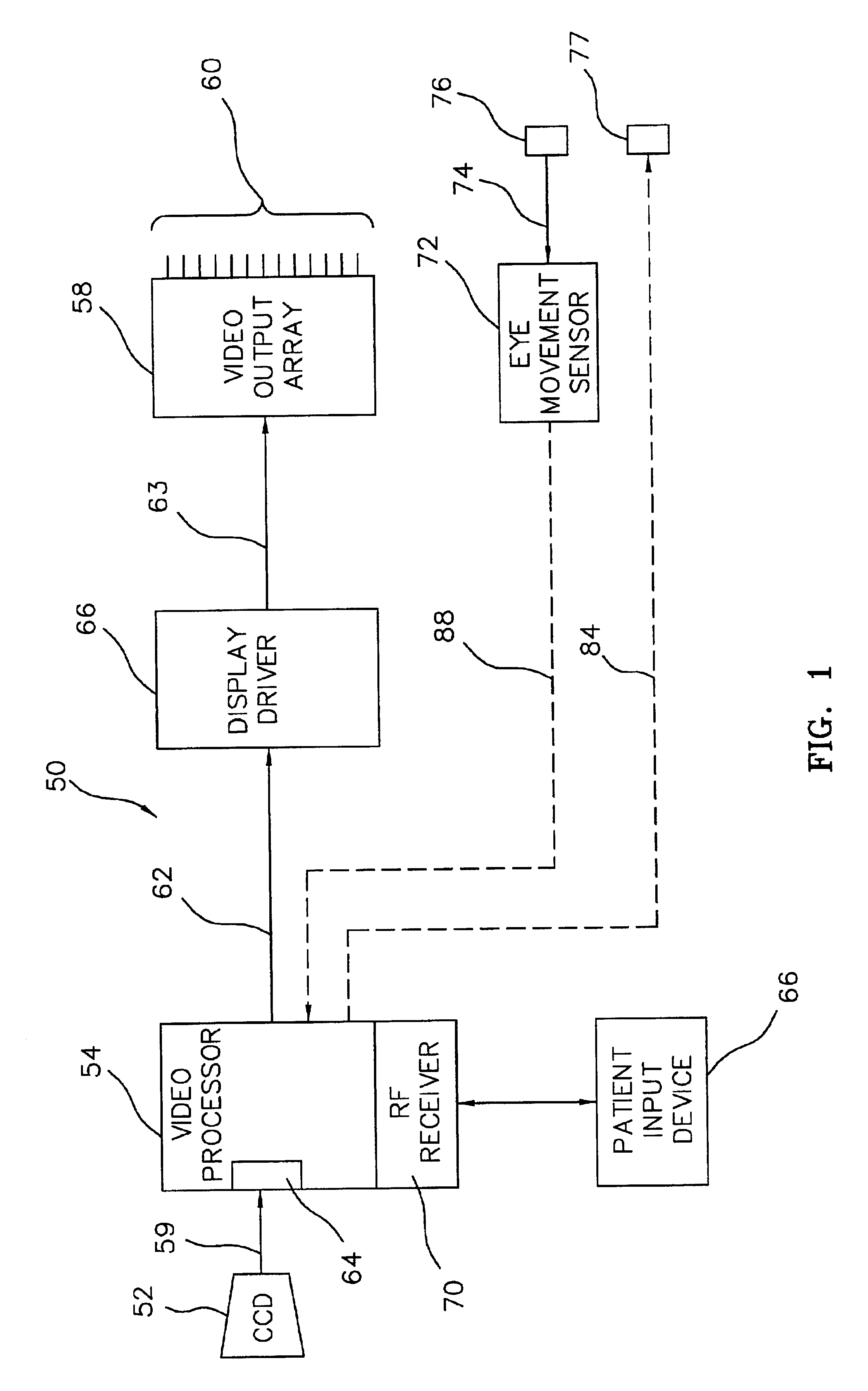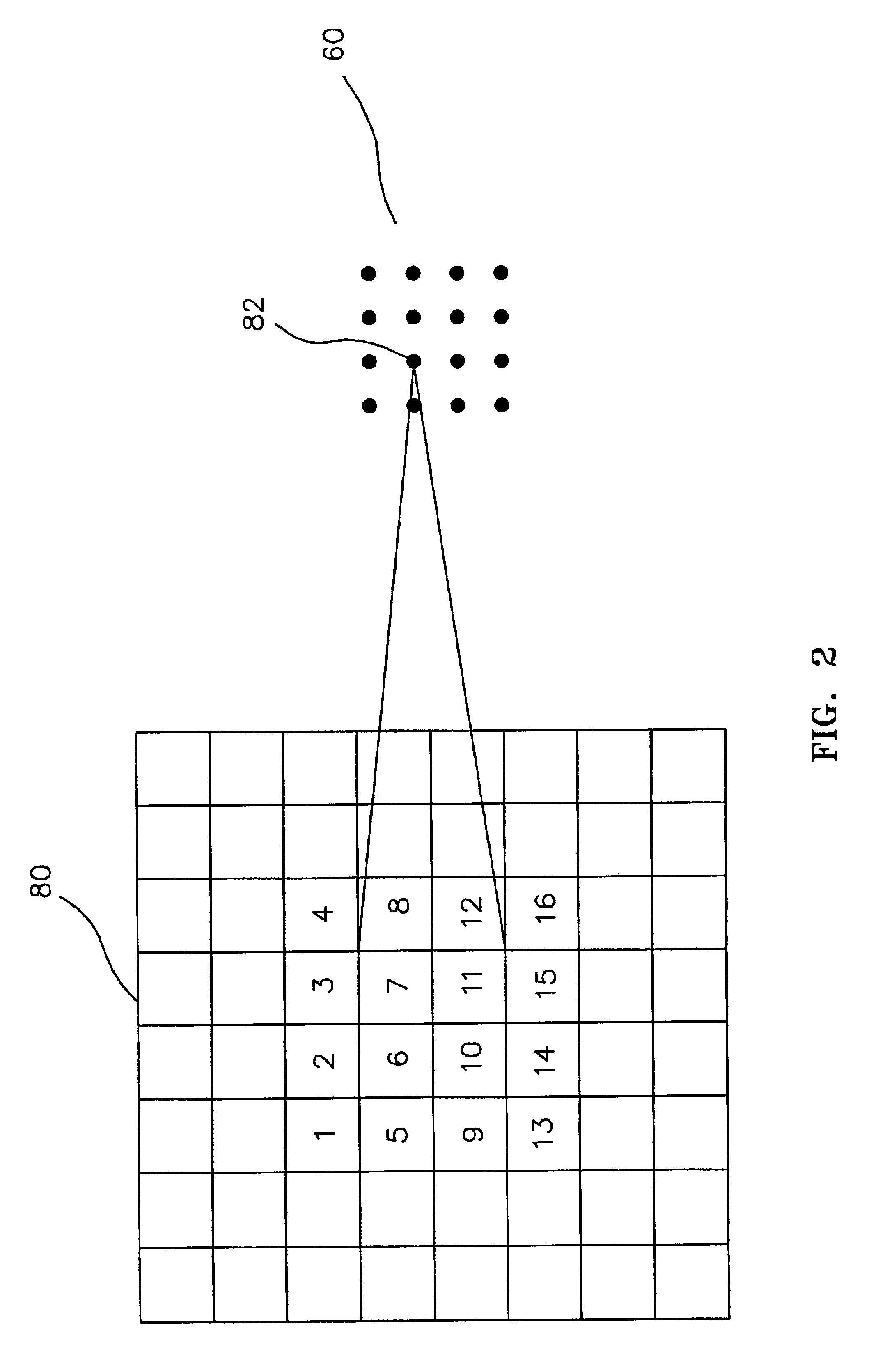Video processing methods for improving visual acuity and/or perceived image resolution
- Summary
- Abstract
- Description
- Claims
- Application Information
AI Technical Summary
Benefits of technology
Problems solved by technology
Method used
Image
Examples
case 1
Jittering
[0117]a(t) and b(t) are random numbers determined from a random distribution with a definable or undefined distribution.
case 2
Scanning
[0118]a(t) and b(t) have preset values that determine the rate and location of different pixel elements being summed for the ESP.
case 3
ck Control of Eye Movement
[0119]a(t) and b(t) are variables derived from the discrepancy between the present eye position and a defined ‘neutral’ or starting eye position.
[0120]Referring now to FIG. 11, there is shown two neighboring electrodes 200 and 202 that are configured for implantation proximate to the patient's retina. In the prior art, each of the electrodes is driven independently, typically using biphasic stimulation pulses. Accordingly, each electrode results in a pixel of resolution. Thus, in this case, two electrodes result in two pixels of resolution. However, in this embodiment of the display driver 66 of the present invention, neighboring electrodes are periodically driven in combination by reversing the polarity of the signal driving one of the adjoining electrodes to generate a differential, preferably biphasic, voltage signal across the neural pathways in the retinal tissue, and thus stimulate a virtual electrode 204 (designated in this figure as □). By varying t...
PUM
 Login to View More
Login to View More Abstract
Description
Claims
Application Information
 Login to View More
Login to View More - R&D
- Intellectual Property
- Life Sciences
- Materials
- Tech Scout
- Unparalleled Data Quality
- Higher Quality Content
- 60% Fewer Hallucinations
Browse by: Latest US Patents, China's latest patents, Technical Efficacy Thesaurus, Application Domain, Technology Topic, Popular Technical Reports.
© 2025 PatSnap. All rights reserved.Legal|Privacy policy|Modern Slavery Act Transparency Statement|Sitemap|About US| Contact US: help@patsnap.com



